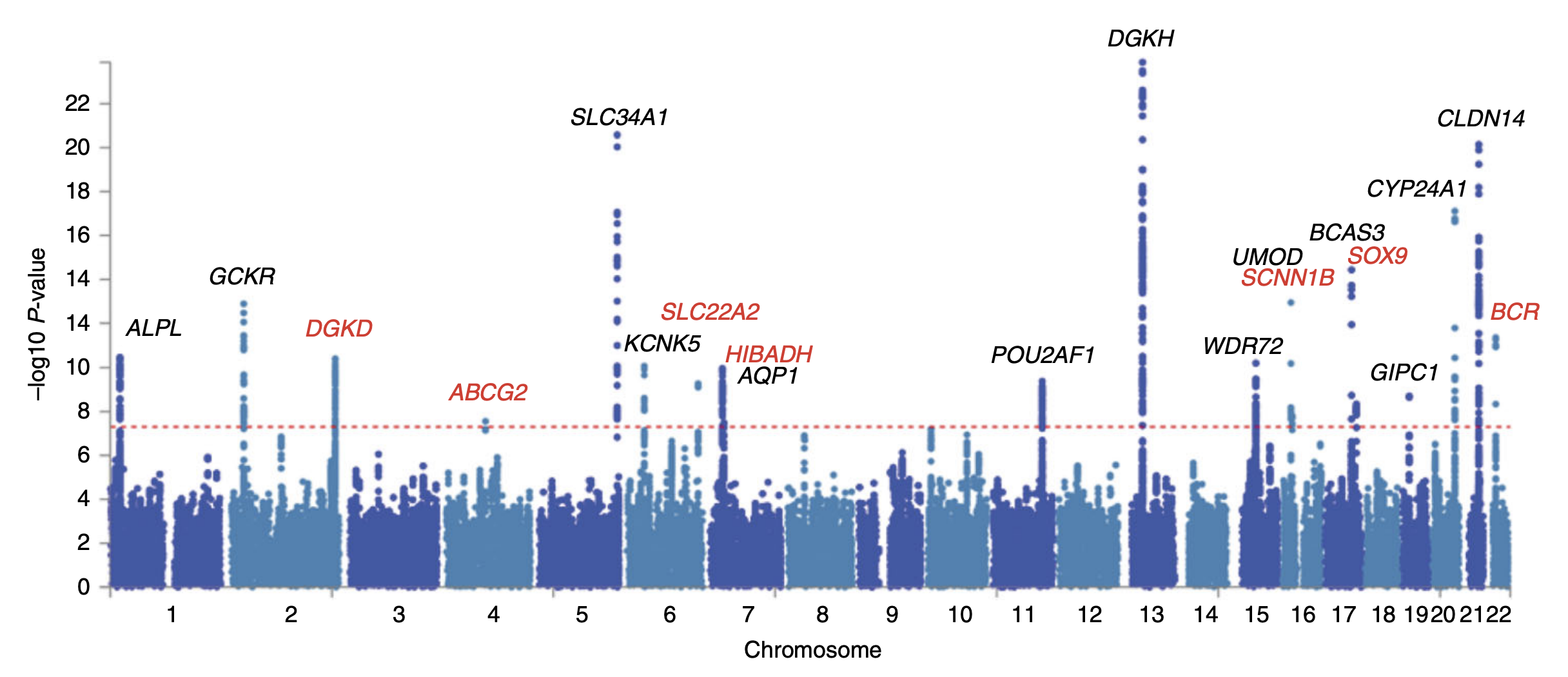|
Nilanjan Chatterjee
Nilanjan Chatterjee is a Bloomberg Distinguished Professor of Biostatistics and Genetic Epidemiology at Johns Hopkins University, with appointments in the Department of Biostatistics in the Bloomberg School of Public Health and in the Department of Oncology in the Sidney Kimmel Comprehensive Cancer Center in the Johns Hopkins School of Medicine.Messersmith, Juli"Nilanjan Chatterjee named Bloomberg Distinguished Professor" ''JHU Hub'', Baltimore, 11 November 2015. Retrieved on 11 November 2015. He was formerly the chief of the Biostatistics Branch of the National Cancer Institute's Division of Cancer Epidemiology and Genetics. Biography Chatterjee was born in Kolkata, India, to parents Aditya Nath and Pranati Chatterjee. He attended Ballygunge Government High School and Saint Xavier's College. He received his bachelor's degree in statistics from the Indian Statistical Institute in 1993, and his master's in 1995. Chatterjee earned his PhD in Statistics from the University of Wash ... [...More Info...] [...Related Items...] OR: [Wikipedia] [Google] [Baidu] |
Kolkata
Kolkata (, or , ; also known as Calcutta , List of renamed places in India#West Bengal, the official name until 2001) is the Capital city, capital of the Indian States and union territories of India, state of West Bengal, on the eastern bank of the Hooghly River west of the border with Bangladesh. It is the primary business, commercial, and financial hub of East India, Eastern India and the main port of communication for North-East India. According to the 2011 Indian census, Kolkata is the List of cities in India by population, seventh-most populous city in India, with a population of 45 lakh (4.5 million) residents within the city limits, and a population of over 1.41 crore (14.1 million) residents in the Kolkata metropolitan area, Kolkata Metropolitan Area. It is the List of metropolitan areas in India, third-most populous metropolitan area in India. In 2021, the Kolkata metropolitan area crossed 1.5 crore (15 million) registered voters. The ... [...More Info...] [...Related Items...] OR: [Wikipedia] [Google] [Baidu] |
Bloomberg School Of Public Health
Bloomberg may refer to: People * Daniel J. Bloomberg (1905–1984), audio engineer * Georgina Bloomberg (born 1983), professional equestrian * Michael Bloomberg (born 1942), American businessman and founder of Bloomberg L.P.; politician and mayor of New York City (2002–2013) * Ramon Bloomberg (born 1972), American artist and film director Other uses * Bloomberg L.P., financial news and media company founded by Michael Bloomberg ** Bloomberg News, a news agency ** ''Bloomberg Businessweek'', weekly business magazine and website ** ''Bloomberg Markets,'' a monthly financial magazine ** Bloomberg Radio, a business radio network ** Bloomberg Television, a business news channel ***Bloomberg TV Canada ***Bloomberg TV Philippines ***Bloomberg TV Malaysia ** Bloomberg Terminal, desktop terminal and software widely used in the financial industry ** Bloomberg Data, API product using sftp or web service protocols to retrieve market data ** Bloomberg Government, online news service c ... [...More Info...] [...Related Items...] OR: [Wikipedia] [Google] [Baidu] |
Whiting School Of Engineering
The G.W.C. Whiting School of Engineering is the engineering college of the Johns Hopkins University, a private research university in Baltimore, Maryland. History Engineering at Johns Hopkins was originally created in 1913 as an educational program that included exposure to liberal arts and scientific inquiry. In 1919, the engineering department became a separate school, known as the School of Engineering. By 1937, over 1,000 students had graduated with engineering degrees. By 1946 the school had six departments. In 1961, the School of Engineering changed its name to the School of Engineering Sciences and, in 1966, merged with the Faculty of Philosophy to become part of the School of Arts and Sciences. In 1979, the engineering programs were organized into a separate academic division that was named the G.W.C. Whiting School of Engineering. The school's named benefactor is George William Carlyle Whiting, co-founder of The Whiting-Turner Contracting Company. Several departmen ... [...More Info...] [...Related Items...] OR: [Wikipedia] [Google] [Baidu] |
Genome-wide Association Study
In genomics, a genome-wide association study (GWA study, or GWAS), also known as whole genome association study (WGA study, or WGAS), is an observational study of a genome-wide set of genetic variants in different individuals to see if any variant is associated with a trait. GWA studies typically focus on associations between single-nucleotide polymorphisms (SNPs) and traits like major human diseases, but can equally be applied to any other genetic variants and any other organisms. When applied to human data, GWA studies compare the DNA of participants having varying phenotypes for a particular trait or disease. These participants may be people with a disease (cases) and similar people without the disease (controls), or they may be people with different phenotypes for a particular trait, for example blood pressure. This approach is known as phenotype-first, in which the participants are classified first by their clinical manifestation(s), as opposed to genotype-first. Each pers ... [...More Info...] [...Related Items...] OR: [Wikipedia] [Google] [Baidu] |
Genetic Association
Genetic association is when one or more genotypes within a population co-occur with a phenotypic trait more often than would be expected by chance occurrence. Studies of genetic association aim to test whether single-locus alleles or genotype frequencies (or more generally, multilocus haplotype frequencies) differ between two groups of individuals (usually diseased subjects and healthy controls). Genetic association studies today are based on the principle that genotypes can be compared "directly", i.e. with the sequences of the actual genomes or exomes via whole genome sequencing or whole exome sequencing. Before 2010, DNA sequencing methods were used. Description Genetic association can be between phenotypes, such as visible characteristics such as flower color or height, between a phenotype and a genetic polymorphism, such as a single nucleotide polymorphism (SNP), or between two genetic polymorphisms. Association between genetic polymorphisms occurs when there is non-r ... [...More Info...] [...Related Items...] OR: [Wikipedia] [Google] [Baidu] |
Genomics
Genomics is an interdisciplinary field of biology focusing on the structure, function, evolution, mapping, and editing of genomes. A genome is an organism's complete set of DNA, including all of its genes as well as its hierarchical, three-dimensional structural configuration. In contrast to genetics, which refers to the study of ''individual'' genes and their roles in inheritance, genomics aims at the collective characterization and quantification of ''all'' of an organism's genes, their interrelations and influence on the organism. Genes may direct the production of proteins with the assistance of enzymes and messenger molecules. In turn, proteins make up body structures such as organs and tissues as well as control chemical reactions and carry signals between cells. Genomics also involves the sequencing and analysis of genomes through uses of high throughput DNA sequencing and bioinformatics to assemble and analyze the function and structure of entire genomes. Advances in ... [...More Info...] [...Related Items...] OR: [Wikipedia] [Google] [Baidu] |
Methodology
In its most common sense, methodology is the study of research methods. However, the term can also refer to the methods themselves or to the philosophical discussion of associated background assumptions. A method is a structured procedure for bringing about a certain goal. In the context of research, this goal is usually to discover new knowledge or to verify pre-existing knowledge claims. This normally involves various steps, like choosing a sample, collecting data from this sample, and interpreting this data. The study of methods involves a detailed description and analysis of these processes. It includes evaluative aspects by comparing different methods to assess their advantages and disadvantages relative to different research goals and situations. This way, a methodology can help make the research process efficient and reliable by guiding researchers on which method to employ at each step. These descriptions and evaluations of methods often depend on philosophical background ... [...More Info...] [...Related Items...] OR: [Wikipedia] [Google] [Baidu] |
Statistical
Statistics (from German: '' Statistik'', "description of a state, a country") is the discipline that concerns the collection, organization, analysis, interpretation, and presentation of data. In applying statistics to a scientific, industrial, or social problem, it is conventional to begin with a statistical population or a statistical model to be studied. Populations can be diverse groups of people or objects such as "all people living in a country" or "every atom composing a crystal". Statistics deals with every aspect of data, including the planning of data collection in terms of the design of surveys and experiments.Dodge, Y. (2006) ''The Oxford Dictionary of Statistical Terms'', Oxford University Press. When census data cannot be collected, statisticians collect data by developing specific experiment designs and survey samples. Representative sampling assures that inferences and conclusions can reasonably extend from the sample to the population as a whole. An expe ... [...More Info...] [...Related Items...] OR: [Wikipedia] [Google] [Baidu] |
Big Data
Though used sometimes loosely partly because of a lack of formal definition, the interpretation that seems to best describe Big data is the one associated with large body of information that we could not comprehend when used only in smaller amounts. In it primary definition though, Big data refers to data sets that are too large or complex to be dealt with by traditional data-processing application software. Data with many fields (rows) offer greater statistical power, while data with higher complexity (more attributes or columns) may lead to a higher false discovery rate. Big data analysis challenges include capturing data, data storage, data analysis, search, sharing, transfer, visualization, querying, updating, information privacy, and data source. Big data was originally associated with three key concepts: ''volume'', ''variety'', and ''velocity''. The analysis of big data presents challenges in sampling, and thus previously allowing for only observations and sampl ... [...More Info...] [...Related Items...] OR: [Wikipedia] [Google] [Baidu] |
Cancer Research
Cancer research is research into cancer to identify causes and develop strategies for prevention, diagnosis, treatment, and cure. Cancer research ranges from epidemiology, molecular bioscience to the performance of clinical trials to evaluate and compare applications of the various cancer treatments. These applications include surgery, radiation therapy, chemotherapy, hormone therapy, immunotherapy and combined treatment modalities such as chemo-radiotherapy. Starting in the mid-1990s, the emphasis in clinical cancer research shifted towards therapies derived from biotechnology research, such as cancer immunotherapy and gene therapy. Cancer research is done in academia, research institutes, and corporate environments, and is largely government funded. History Cancer research has been ongoing for centuries. Early research focused on the causes of cancer. Percivall Pott identified the first environmental trigger (chimney soot) for cancer in 1775 and cigarette smoking wa ... [...More Info...] [...Related Items...] OR: [Wikipedia] [Google] [Baidu] |
Quantitative Genetics
Quantitative genetics deals with phenotypes that vary continuously (such as height or mass)—as opposed to discretely identifiable phenotypes and gene-products (such as eye-colour, or the presence of a particular biochemical). Both branches use the frequencies of different alleles of a gene in breeding populations (gamodemes), and combine them with concepts from simple Mendelian inheritance to analyze inheritance patterns across generations and descendant lines. While population genetics can focus on particular genes and their subsequent metabolic products, quantitative genetics focuses more on the outward phenotypes, and makes only summaries of the underlying genetics. Due to the continuous distribution of phenotypic values, quantitative genetics must employ many other statistical methods (such as the ''effect size'', the ''mean'' and the ''variance'') to link phenotypes (attributes) to genotypes. Some phenotypes may be analyzed either as discrete categories or as continuo ... [...More Info...] [...Related Items...] OR: [Wikipedia] [Google] [Baidu] |







